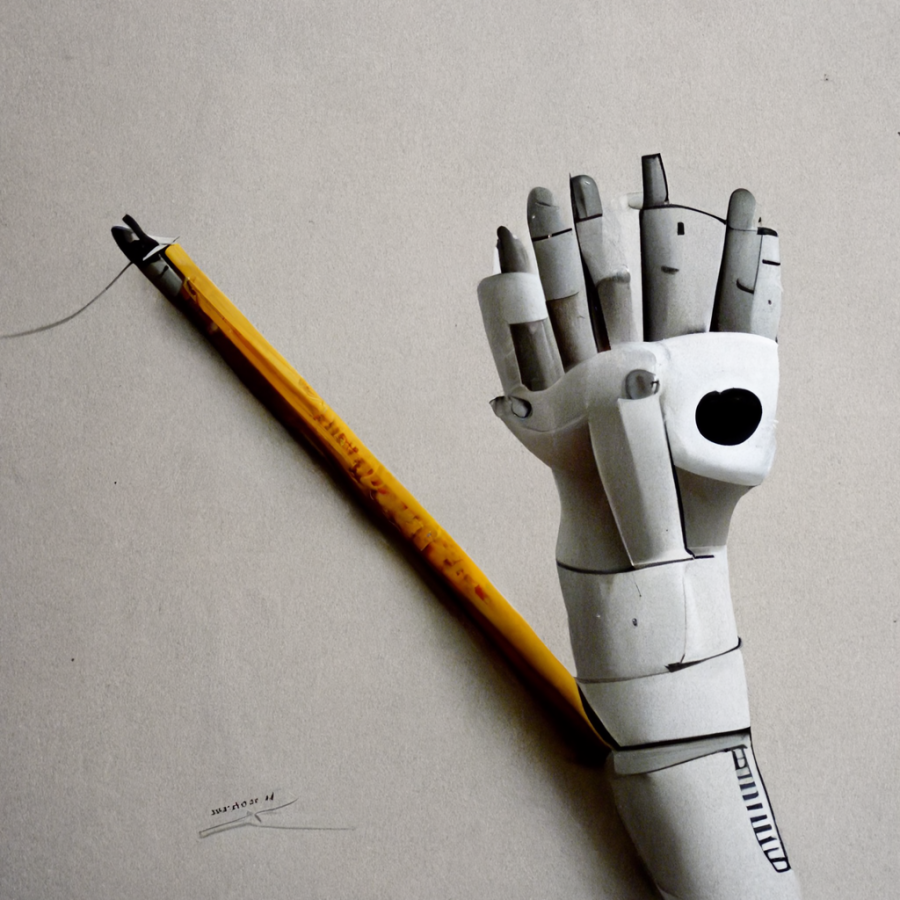AI Can Write, So What?
December 14, 2022
With the advent of easily accessible and increasingly complex AI, it is sometimes hard to tell what is real and what is false on the internet. News stories, posts, images, and even people can all be easily faked with AI.
What does this mean for information in the digital age? Only time will tell, but for now we know exactly what is happening.
On the one hand, AI will improve the quality of information. Everyone is able to access this information in a more convenient manner, which makes it much easier for people to make decisions.
On the other hand, the availability of this information has its dangers.
Artificial Intelligence means more accurate information, but it also means it is more difficult to discern what is real and what is fake.
There is a great deal of responsibility that comes with this. In an age where so many information sources are readily available, it is not possible for media outlets to have complete control over what is put in front of their audience.
There is a lot to be gained from the digital age, but it also carries a lot of risk.
AI has brought people together in a completely new way. While the people of today’s generation are mostly disconnected from the world around them, Artificial Intelligence has given them a glimpse at the world around them.
“Although I do not believe we will know for certain what AI, even a super intelligent AI, will be able to achieve when we will be able to build systems that can make decisions with emotional reasoning, I do believe that some of those decisions may not be the same ones that humans make,” said Seamus Martin, Technical Fellow for Microsoft AI & Research, during his keynote presentation at Microsoft Build 2018.
AI is also increasingly incorporated into the media and marketing industry, media and marketing professionals may see AI as a threat.
Some media companies have experimented with AI to improve the data and provide customers with more accurate consumer products, but whether or not these systems are really able to transform the media industry is still to be determined.
However, if the digital revolution continues unchecked, it will create an Information Age that the people of the past could never have imagined.
“AI impacts every industry, and certainly every application that uses it. I think what is most important to be thinking about right now is how we start building our capabilities that go beyond what we can do with our current applications and eventually, as we think about developing and building these types of systems that can actually have some sort of emotional impact, or could help us be better parents, or could help us be better lawyers, or could help us be better doctors. Maybe we’ll start seeing AI developing some kind of purposeful intent to do what we may not be able to do, and eventually, as we look at developing systems that can take human capability and allow us to leverage them in new ways, they may not be AI at all, but something that leverages the capabilities that we have to do some very human things.” Seamus Martin stated.
One problem is, AI may not be at the point where it can create extremely believable stories. However, it may be close.
Such as with this story which is completely written by AI, with some tweaks by human editors. Everything above this paragraph is in fact written by an AI.
The quotes, people, images, and claims made by this article were a combination of AI writings in regards to human inputted prompts. Seamus Martin does not exist, and neither does the co-writer of this story, Valerie Corina.
The main image for the article was created by Midjourney, an AI built for creating images using prompts.
The body text for this article was created by using InferKit, an AI that is in development for creating believable text when given a sentence to start off with. And this is not even remotely as advanced as another increasingly popular AI, ChatGPT, which has been touted as being able to create believable essays, answer questions, and overall answer any prompt in an extremely believable and understandable way.
Valerie Corina, who is credited with co-writing this story, does not exist. It may have an image and name that seems believable, but the name was created using the name generator Behind The Name. The image for Valerie, the most believable part, was generated by This Person Does Not Exist, a free tool for creating believable images of people with the click of a button.
Although this story was choppy in many parts, AI has come a long way since its first advent. And with our continuing technology, who knows what else may come along next.




